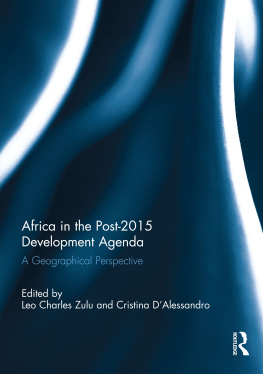SPEECH AND SONG AT THE MARGINS OF GLOBAL HEALTH
Zulu Tradition, HIV Stigma, and AIDS Activism in South Africa
STEVEN P. BLACK
RUTGERSUNIVERSITY PRESS
New Brunswick, Camden, and Newark, New Jersey, and London
Library of Congress Cataloging-in-Publication Data
Names: Black, Steven P., 1980 author.
Title: Speech and song at the margins of global health : Zulu tradition, HIV stigma, and AIDS activism in South Africa / Steven P. Black.
Description: New Brunswick : Rutgers University Press, 2019. | Includes bibliographical references.
Identifiers: LCCN 2018057615 | ISBN 9780813597713 (pbk.)
Subjects: LCSH: SociolinguisticsSouth Africa. | HIV-positive personsSouth AfricaLanguage. | HIV infectionsSocial aspectsSouth Africa. | MusicSocial aspectsSouth Africa. | Zulu (African people)South AfricaSocial conditions. | Stigma (Social psychology)South Africa. | Transmutation (Linguistics) | Choirs (Music)South Africa.
Classification: LCC P40.45.S6 B53 2019 | DDC 306.4408770968dc23
LC record available at https://lccn.loc.gov/2018057615
A British Cataloging-in-Publication record for this book is available from the British Library.
Copyright 2019 by Steven P. Black
All rights reserved
No part of this book may be reproduced or utilized in any form or by any means, electronic or mechanical, or by any information storage and retrieval system, without written permission from the publisher. Please contact Rutgers University Press, 106 Somerset Street, New Brunswick, NJ 08901. The only exception to this prohibition is fair use as defined by U.S. copyright law.

The paper used in this publication meets the requirements of the American National Standard for Information SciencesPermanence of Paper for Printed Library Materials, ANSI Z39.48-1992.
www.rutgersuniversitypress.org
Manufactured in the United States of America
TRANSCRIPTION CONVENTIONS
All transcripts, as representations of actual strips of discourse, cannot fully capture the dynamics of a particular linguistic interchange, let alone the use of gesture, physical space, and body orientation. Rather, transcripts are documents shaped by theory within a particular discipline. As such, thoughtful and theoretically informed choices must be made as to what aspects of an interchange to include in a transcript (Duranti 2006, Ochs 1979). In the excerpts for this paper, the level of descriptive detail in each transcript corresponds with the central analysis being put forward with the transcript. Here are the conventions used in these transcripts (see also Goodwin 1990, Sacks et al. 1974).
((xxx)) | Double parentheses encapsulate anything not spoken by the participants, especially a description of gesture, facial expression, body orientation, or the way in which the talk occurred (e.g., singing versus speaking). |
::: | Colons show where the sound just prior to the colons has been considerably lengthened. |
. | A period indicates a falling intonation. |
, | A comma indicates a falling-rising intonation. |
? | A question mark indicates a rising intonation. |
= | Equal signs indicate when there is no break between the end of one participants talk and the beginning of anothers. |
(0.0) | Numbers in single parentheses mark silence in seconds and tenths of seconds. |
(xxx) | Words in single parentheses indicates that the transcriber was unsure of the veracity of his/her hearing of the material. |
(????) | Question marks in parentheses indicate that something was said, but it is not possible to distinguish the words from a recording. |
- | A hyphen indicates a sudden stop in an individuals talk (a glottal stop). |
xxx | Underlining indicates emphasis in an individuals talk. |
[ | Right-facing brackets indicate the place where overlap between two or more speakers occurs. |
ORTHOGRAPHY
The Zulu language (isiZulu) has a standardized written orthography that is followed here. Orthographic representations and International Phonetic Alphabet (IPA) symbols and descriptions for consonants without equivalents in English are listed in the table.
LETTER | IPA SYMBOL | DESCRIPTION |
c | Dental click |
q | Palato-alveolar click |
x | Alveolar lateral click |
hl | Voiceless lateral fricative |
dl | Voiced lateral fricative |
h | h | *Aspiration |
MORPHEME LABELS
Morpheme labels were produced in consultation with several contemporary and classic isiZulu and Bantu language grammar books (Doke 1930 [1927], Mbeje 2005, Nurse & Philippson 2003, Poulos & Bosch 1997, Poulos & Msimang 1998). The following list includes those labels that are used in the book.
Nominal class prefixes
SINGULAR | PLURAL |
n1 = u | n2p = aba |
n1a = u | n2ap = o |
n3 = umu | n4p = imi |
n5 = i(li) | n6p = ama |
n7 = isi | n8p = izi |
n9 = in/im | n10p = izin/izim |
n11 = u(lu) (the plural of n11 is n10p) |
n14 = ubu |
n15 = uku |
Verbal subject concords
1pl = si | 1st person plural subject marker |
1s = ngi |












 The paper used in this publication meets the requirements of the American National Standard for Information SciencesPermanence of Paper for Printed Library Materials, ANSI Z39.48-1992.
The paper used in this publication meets the requirements of the American National Standard for Information SciencesPermanence of Paper for Printed Library Materials, ANSI Z39.48-1992.